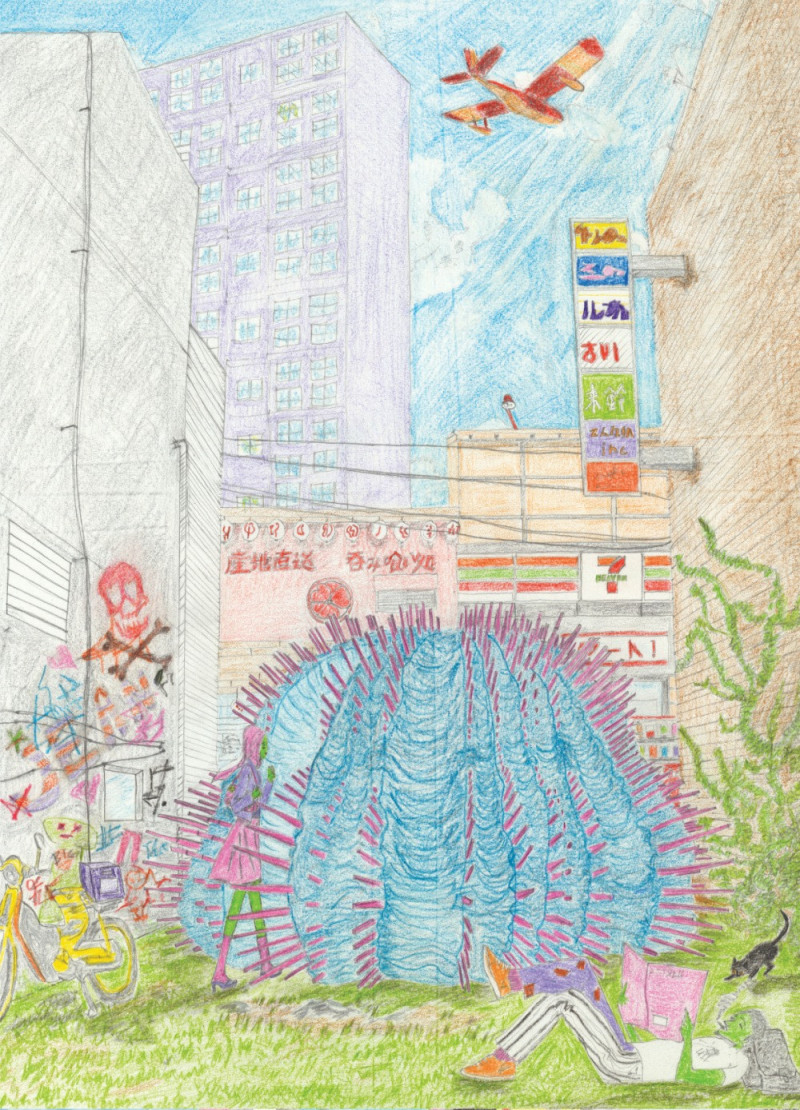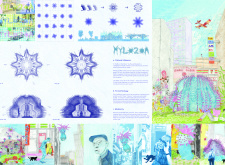5 key facts about this project
The project under review is an architectural design that embodies a nuanced exploration of the intersection between human experience and spatial constructs. Drawing inspiration from literary themes, the design fosters an environment that challenges conventional perceptions of space and identity. It serves as a multifaceted structure intended for diverse interactions, emphasizing adaptability and fluidity. The architecture promotes a dialogue between its users and the environment, encouraging a contemplative experience.
Unique Conceptual Framework This architecture stands apart due to its integration of modular design principles, allowing for reconfiguration according to user needs and environmental responses. The project employs organic forms reminiscent of living organisms, which creates a dynamic spatial environment. These forms diverge from traditional architectural shapes, favoring a more intuitive and expressive aesthetic. The design encourages exploration and engagement, reflecting the complexity of human emotions and thoughts.
Material selection plays a critical role in the project's uniqueness. The combination of transparent materials with sturdy composites facilitates both visibility and structural integrity. This duality invites an interaction with natural light, which fills the interior spaces and creates an atmosphere conducive to reflection and connection. The choice of organic materials, such as textiles and suspended planters, bridges the gap between the interior and exterior, reinforcing a biophilic design approach.
Spatial Organization and User Engagement The layout of the project consists of interconnected spaces that allow for fluid movement and interaction. Architectural plans highlight areas designated for various activities, ensuring functionality while maintaining an open and welcoming atmosphere. Each section is designed to accommodate specific functions yet retains an overall coherence that fosters a sense of unity among different spaces.
The architectural sections illustrate a careful consideration of scale and proportion, further enhancing the user's experience. Transitional spaces serve as both thresholds and gathering areas, inviting users to pause and reflect before moving to another environment. The manipulation of light and shadow throughout the project creates an engaging sensory experience that adapts to changing times of day and weather conditions.
Through the use of innovative design strategies, this architecture represents more than a built environment; it encapsulates a holistic approach to personal and communal experiences. The integration of narrative elements encourages individual interpretation, promoting a more profound understanding of the relationship between space and the self.
For a comprehensive understanding of this architectural design, readers are encouraged to explore the architectural plans, architectural sections, and other architectural designs provided. These elements detail the innovative architectural ideas and unique approaches that define this project.























